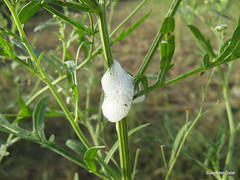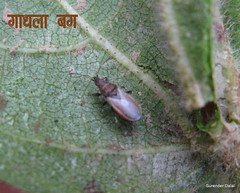Consequences of the Green Revolution During the 1950s itself the Nehru government had approached the
Rockefeller Foundation to apply its technological programmes in India to solve the food deficiency. For this India’s agricultural research was reorganised substantially under the US supervision. In the early 1960s, in the then international context of global agro-industrial corporations looking for new outlets and markets, the World Bank in its capacity as chairman of the
Aid India Consortium launched the so-called Green Revolution. With the introduction of this imperialist strategy in to the planning process, more emphasis was provided for agriculture in the Fourth Five Year Plan. At the behest of World Bank and other imperialist agencies the Government of India (GOI) supplied high yielding varieties of seeds, along with fertilisers, pesticides, agro machineries, etc. at subsidised rates to those who had enough resources like land, access to water and capital. The erstwhile zamindars, a section of feudal landlords and new landlords were promoted to reap benefits from the Green Revolution.
In two decades the crop-rotations, crop varieties as well as way of cultivation were changed in well over 50 million hectares. It went on escalating with the government help creating a kulak class who became the new power centres in rural areas controlling the trade, co-operatives and the local administration. Of course there was a boost in the production of food crops to almost 185 million tonnes per annum bringing food self-sufficiency at the present consumption rate of the people out of whom about 50 percent are below poverty line. This also led to marked uneven development among the states and even among regions in a state. It also led to the agricultural bourgeois-rich peasant classes getting organised and launching struggles from early 1980s for better prices for their outputs and more subsidies for agricultural inputs.
The Green Revolution led to more concentration of agricultural land in fewer hands as in Punjab and Haryana. More households became landless increasing the number of the pauperised sections in the rural areas. While the kulak sections reaped big benefits and went on becoming richer, the small peasant and lower middle peasant families faced ruin in many areas when their crops failed and debt accumulated leading to suicides by increasing numbers and ever increasing migrations. On the whole the Green Revolution failed to eliminate or minimise poverty even in highly developed areas. Besides, the enormous accumulation of resources in some of the most favoured areas has left a negative agricultural growth in other areas.
The balance sheet of the land reforms from the top, the Green Revolution and ever-intensifying intrusion of speculative finance capital, MNCs, Corporate houses, market mechanism, etc. to the agrarian sector is proved on the whole highly negative sharpening the contradiction in the rural areas further and pauperising vast sections of rural masses. The
National Sample Survey (NSS) results show two marked tendencies. One is fragmentation of the land holdings with average operated area with a family decreasing. This makes agriculture unviable many times for large sections. As a result either the land is kept fallow or sold to landlords, increasing land concentration. The rural landless households have increased sharply. Marginalisation of land holdings is also growing sharply. While the marginal, small, medium households did not gain anything in real terms, the top category comprising 18.5 percent operate 60.2 percent of land and gained in all fields.
NSS shows that the unemployment and underemployment among agricultural labour households have increased significantly. This is more in the Green Revolution areas. The earning of the vast masses have gone down so much that 80 percent of the population’s daily earning is only about Rs. 20. As a result, according to the NSS, more than 80 percent of the population is not able to afford the food necessary to fulfil their calorie requirements.
Thus the agrarian sector gives a picture of extreme contradictions with increasing poverty, with a small section cornering more land and the riches. More than six decades of neo-colonisation, in spite of much trumpeted development projects, has caused serious impact on agrarian sector. It has only made the objective situation more acute. It reveals that only agrarian revolution from below mobilising the agricultural workers-poor peasant class under the leadership of working class can change the situation radically in favour of the masses.














